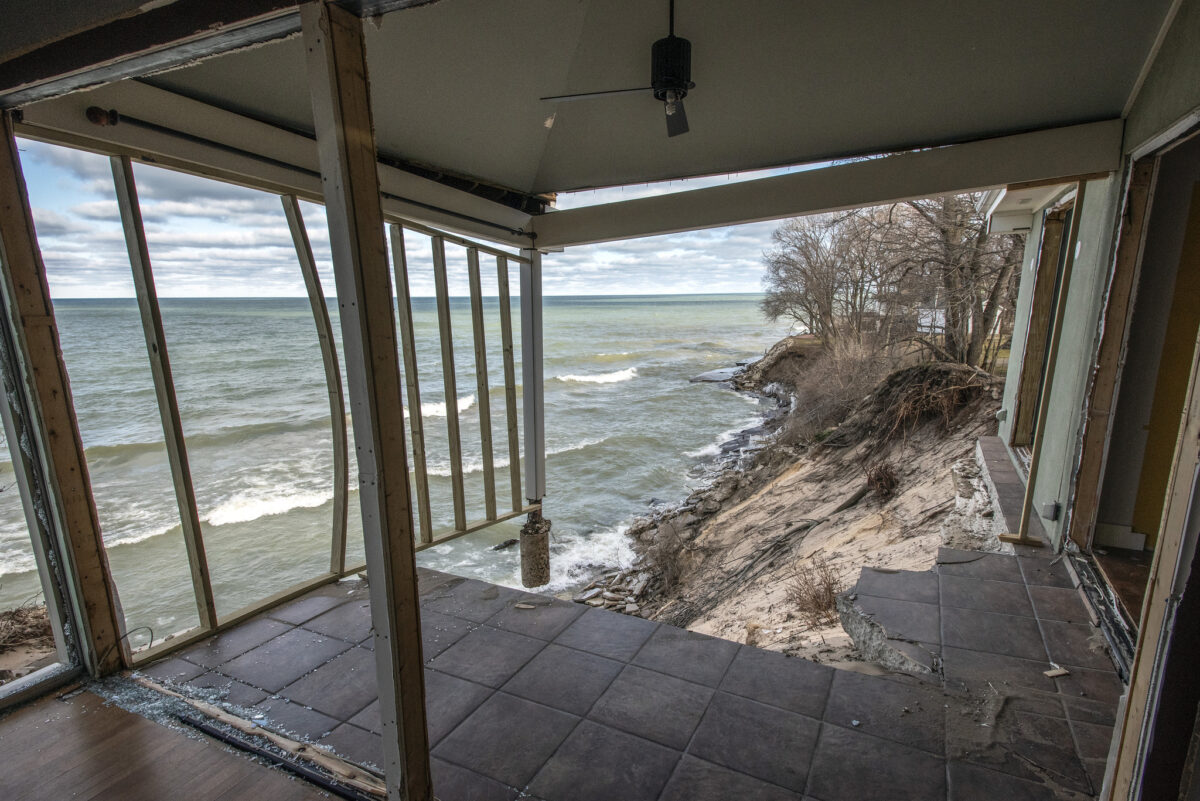With our abundant fresh water and temperate climate, the Great Lakes region is often thought of as a climate haven that may be off the hook from the worst impacts of climate change.
We may be spared from many threats facing other regions, but the climate change threats facing the lakes are no less concerning.
“Our region is often referred to as a ‘climate refuge,’ a place where people from rapidly warming parts of the U.S. will seek shelter. We should prepare for this by acknowledging the problems climate change has already caused and the unpredictable future the region faces,” said Joel Brammeier, Alliance for the Great Lakes President & CEO. “The Great Lakes region must plan now for climate change. The changes we make today can make the Great Lakes a healthy place for people who live here now and for future generations.”
Climate change can feel overwhelming. But we see hope for the future. We’ve identified the biggest climate change challenges facing the Great Lakes and actionable ideas that will ensure healthy lakes for future generations.
Volatile Water Levels

Climate Impact: The Great Lakes naturally swing between lows and highs over several decades. They have gone from record low water levels to record high levels within about a decade, a stunningly fast swing. These rapid transitions between extreme highs and lows represent a new cycle for the lakes. Scientists agree that the sharp shifts in water levels are related to climate change. Severe high water levels cause serious problems for waterfront properties and infrastructure like roads, marinas, and water systems. Extreme low levels cause problems for water intakes, shipping, and recreational infrastructure like marinas.
What we can do now: The main factors that affect water levels are rainfall and evaporation. We can’t control precipitation or ice cover, but we can be prepared to deal with fluctuating water levels. Natural shorelines, including dunes and wetlands, can weather these extremes. State and federal governments should plan now for how to invest in restoring our shorelines on a large scale. Communities can focus on ensuring construction does not harm natural shorelines while also adapting water systems and roads to weather this volatility.
Extreme Weather

Climate Impact: A warming climate will increase extreme weather events, including intense rains and severe drought. The Great Lakes region is already experiencing this impact. For example, last June, up to 7 inches of rain fell in less than 24 hours in the Detroit metro area, flooding thousands of homes and businesses and costing tens of millions of dollars in damage. Storm events like this are becoming more frequent. Often the impacts from these storms are not felt equitably. In Chicago, for instance, a study found that 87% of flood damage insurance claims were paid in communities of color.
What we can do now: Great Lakes communities can begin investing today to repair or replace failing wastewater systems. Federal and state agencies must ensure that these projects are climate-resilient, using green (natural) infrastructure that mimics nature’s ability to absorb water. And communities most impacted must have a seat at the table when project decisions are made to ensure equitable climate-resilient development.
Native Species at Risk

Climate Impact: Warming air temperatures are warming the lakes, threatening cold water species, and creating new habitat for non-native species. Lake Superior, notorious for its cold water, is warming faster than many large lakes around the world. The lake’s cold water has historically kept out many invasive species that thrive in other parts of the Great Lakes.
What we can do now: Numerous state and federal agencies manage fisheries and habitat restoration projects across the Great Lakes. The Great Lakes Restoration Initiative sets the agenda for federal spending and must be updated to ensure restoration efforts are climate-resilient.
Intensifying Harmful Algal Blooms

Climate Impact: The massive harmful algal bloom that covers western Lake Erie each summer threatens drinking water supplies and puts the region’s economy at risk, hampering tourism and recreational use. Warmer water fuels algal growth and extreme rains flush more nutrient pollution, the primary fuel for algae, off farm fields into waterways. Algal blooms are showing up in parts of the lakes, like Lake Superior, that have never experienced this problem.
What we can do now: The cause of the worst algal blooms is nutrient pollution flowing off agricultural lands. Farming practices and regulations must change to reduce nutrient pollution and prevent harmful algal blooms. Downstream communities that bear the brunt of water contamination and increased water treatment costs must be at the table when decisions are being made about solving this problem.
